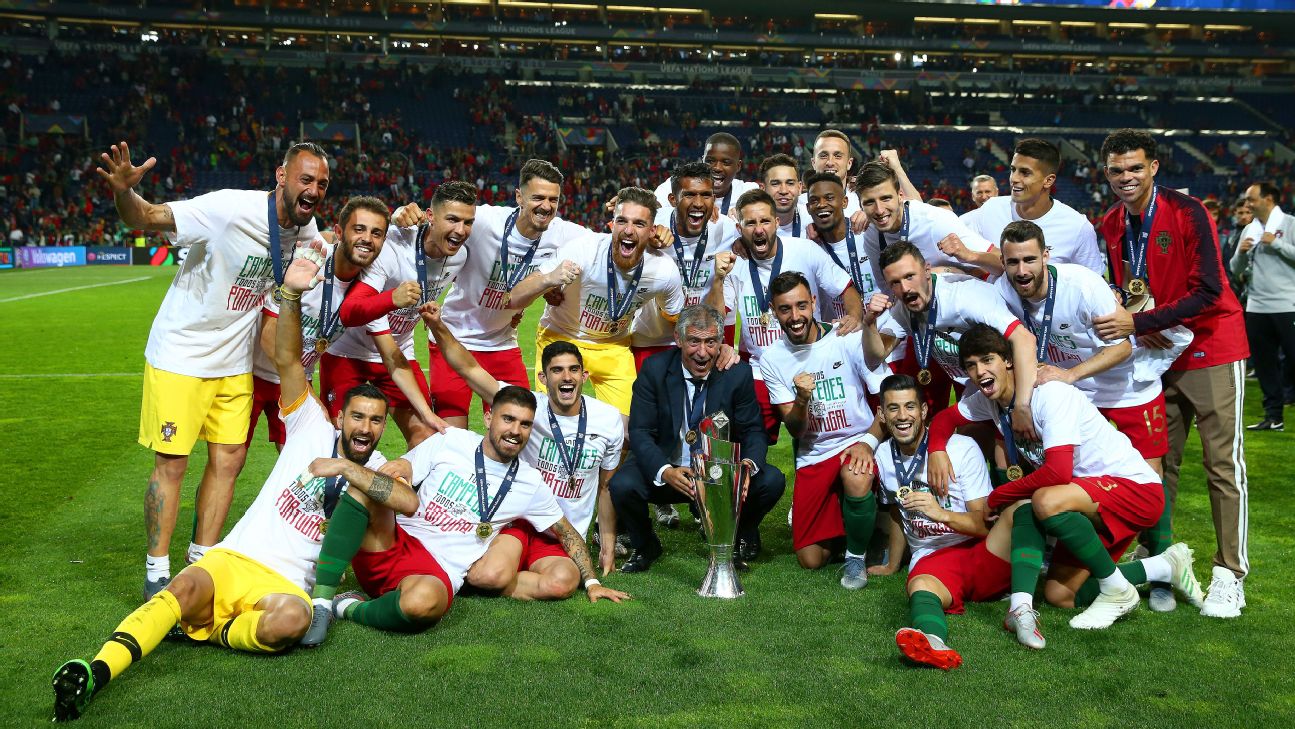

The second edition of the UEFA Nations League begins in September 2020. Here’s a guide for all you need to know about the competition.
What is the UEFA Nations League?
It is a competition between the 55 member nations of UEFA, created because “UEFA and its associations wanted more sporting meaning in national team football, with associations, coaches, players and supporters increasingly of the opinion that friendly matches are not providing adequate competition for national teams.”
So this means there are no more international friendlies?
Yes, international friendlies have now been largely eradicated, save for pre-tournament warm-up matches and rare blank dates for some nations.
After Euro 2020, the remaining dates that year will be for UEFA Nations League matches. World Cup qualifying then runs through 2021, meaning there will be no friendlies until March 2022. The exception is for some nations in groups of five teams in World Cup qualifying, who will have two spare match dates.
Who are the UEFA Nations League holders?
Portugal won the first UEFA Nations League trophy, beating Netherlands 1-0 in the final in June 2019. England finished third after edging Switzerland 6-5 on penalties.
When is the next UEFA Nations League?
Matchday 1: Sept. 3-5, 2020
Matchday 2: Sept. 6-8, 2020
Matchday 3: Oct. 8-10, 2020
Matchday 4: Oct. 11-13, 2020
Matchday 5: Nov. 12-14, 2020
Matchday 6: Nov, 15-17, 2020

What is the format?
The 55 nations are split into four “Leagues.” The strongest nations are in League A, and the weakest in League D.
But the format has been changed for 2020.
League A, B and C: Four groups of four nations (16 teams each)
League D: One group of four and one group of three (7)
Teams within each group will play each other home and away.
How has the UEFA Nations League format changed?
In the 2018 edition, Leagues A and B had only 12 teams each, with four groups of three nations.
In 2020, Leagues A, B and C will all have 16 nations, so four groups of four. This eliminates the need for friendlies for most nations.
League A: Portugal (holders), Netherlands, England, Switzerland, Belgium, France, Spain, Italy, Bosnia and Herzegovina, Ukraine, Denmark, Sweden, Croatia, Poland, Germany, Iceland
League B: Russia, Austria, Wales, Czech Republic, Scotland, Norway, Serbia, Finland, Slovakia, Turkey, Republic of Ireland, Northern Ireland, Bulgaria, Israel, Hungary, Romania
League C: Greece, Albania, Montenegro, Georgia, North Macedonia, Kosovo, Belarus, Cyprus, Estonia, Slovenia, Lithuania, Luxembourg, Armenia, Azerbaijan, Kazakhstan, Moldova
League D: Gibraltar, Faroe Islands, Latvia, Liechtenstein, Andorra, Malta, San Marino
When is the UEFA Nations League draw?
The draw for the 2020 UEFA Nations League will be held in Amsterdam on March 3. Seeding will likely be based upon the UEFA Nations League ranking from 2019.
What about promotion and relegation?
Yes. The winners of each group in Leagues B, C and D move up, while the nations bottom of Leagues A, B and C drop down for the next edition of the Nations League.
Why weren’t Germany relegated for this edition?
Although Germany, Croatia, Iceland and Poland finished bottom of their League A groups, the decision to expand to 16 nations in a league meant no nations were relegated. The format revamp also meant Northern Ireland, Republic of Ireland, Slovakia and Turkey avoided relegation from League B.
Will there actually be UEFA Nations League champions?
Yes. The four group winners from League A will playoff in knockout format (semifinals, third-place match and final) in June 2021. The host nation has yet to be chosen, though it has to be one of the finalists.
Finals: June 2-6, 2021
The finalists will be drawn into a group of five nations in World Cup qualifying so the June dates can remain free for the Nations League finals.
How will the Nations League affect World Cup qualifying?
For the 2019 edition, the Nations League will be used to select the teams which will take part in the Euro 2020 finals playoffs.
It will be even more important in 2021, as the Nations League will, in part, decide which 12 nations will take part in the playoffs for the 2022 World Cup, to earn the final three places.
Only the 10 group winners in World Cup qualifying will go direct to Qatar 2022.
UEFA will decide shortly how it forms the playoffs, though a 12-nation format with two knockout stages has been suggested. This would see the 10 group runners-up joined by two teams from the Nations League.
The Nations League will not have an impact on the World Cup qualifying draw itself, as FIFA’s World Ranking will be used to seed this.
